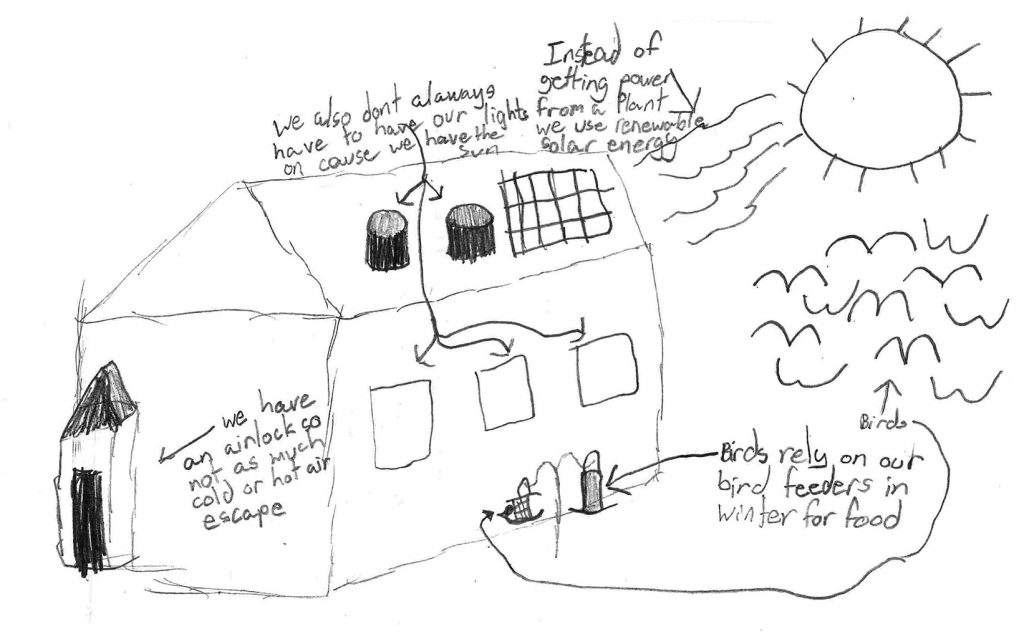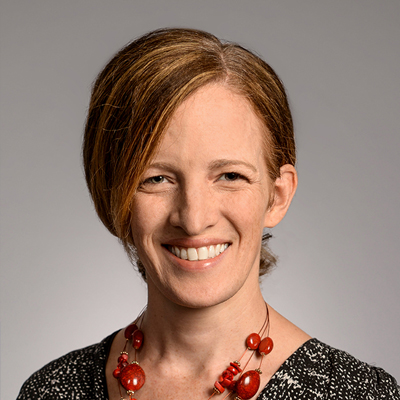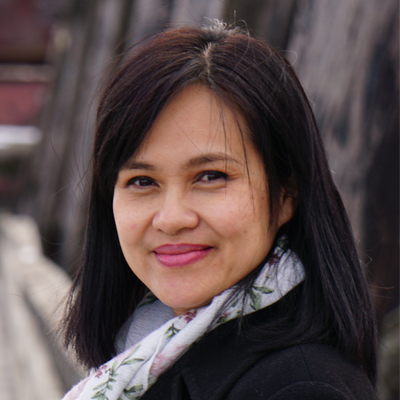Science education based in sustainable architecture

Welcome to the ENCORE learning lab where we teach science education through sustainable architecture across K-16 grades. We are an interdisciplinary team with leading experts in the areas of causal, model-based reasoning to develop youth ecological literacy (Zangori) and the development of youth green building literacy (Cole). In our approach students use model-based reasoning to explore the relationships between the built environment and Earth Systems. Just as an encore summons the repetition of a well-loved piece, we believe that important themes in science education are learned through iterative re-play. These themes are also deeply attuned to a student’s lived experience in place. We use place-based learning for students to consider the relationship and interactions between human systems, such as their school building, and natural systems that span from local to global. We believe that using the place that students inhabit daily – their school building – gives them a concrete understanding about systems to consider how actions, changes, or malfunctions in one part of a complex natural and/or human system affects the overall system.

Preliminary Work
We began our project work through exploring how a green schoolhouse impacted 5th grade students’ ideas about the relationship between their school building and the local ecosystem to build their ecological literacy. An ecologically literate person is someone who has knowledge of ecological principles, considers their human agency within ecological systems, and understands how and why human and natural systems are connected through multiple cause and effect relationships occurring across both spatial and temporal dimensions (Jordan et al., 2009; McBride et al., 2013; Morrone, Mancl, & Carr, 2001).
In our initial study, we found that even without a curricular intervention about the green building on the elementary school campus (called the Eco Schoolhouse), the students still used the Eco Schoolhouse to make human-ecosystem connections (Zangori & Cole, 2019). Interestingly, those students who were assigned to the Eco Schoolhouse as their physical classroom described the relationship positively while those students in the classroom next door (that were not in a green building) described a negative relationship between their building and the ecosystem. They then relied on the Eco Schoolhouse to discuss what a positive relationship looks like.
We received exciting media coverage for this initial study through several outlets such as District Administration, eSchool News, Futurity, and Spaces for Learning. In addition, we received media coverage through the MU system as well as from the student newspaper at Mizzou and a broadcasted interview with the local TV station KOMU.
Currently, we are completing a project that explored the impact of place-based learning in a “Learnscape” that helped students make sense of energy flow. A Learnscape is an outdoor classroom that promotes human-nature interactions (Tyas-Tunggal, 1997). Common features include edible gardens, native plantings, rainwater catchment, and renewable energy systems such as photovoltaic panels or wind turbines. This project examined student development of energy literacy in two schools, one with and the other without a Learnscape. We found that the physical Learnscape environment enhanced student ability to draw and talk about renewable energy systems (Cole, Fallahhosseini, & Zangori, in preparation).
In addition, we have three grant funded in-process interdisciplinary projects:
- Build It Green (BIG!)
- the EYE project in 6th grade
- Raising the Green Roof in 4th grade.
Please scroll down to learn more about these exciting projects!
The ENCORE Team

Laura Zangori is an Associate Professor of Science Education at the University of Missouri. Over the past 6 years, Zangori has taught and worked with students ranging from elementary through undergraduate classrooms on using the NGSS practices to support students’ scientific explanations about how and why scientific phenomenon occurs. Currently, her research focuses on supporting preservice and inservice teachers’ use of scientific modeling in their science lessons and exploring how their students use models to develop scientific explanations.
Full bio: cehd.missouri.edu/person/laura-zangori
Email: zangoril@missouri.edu
Selected Research:
- Zangori, L., Ke, L., Sadler, T. D., & Peel, A. (2020). Exploring primary students’ reasoning about ecosystems. International Journal of Science Education. https://doi.org/10.1080/09500693.2020.1783718
- Zangori, L. & Pinnow, R. (2020).Positioning participation in the NGSS era: What counts as success? Journal of Research in Science Teaching.57(4), 623-648.doi.org/10.1002/tea.21607
- Zangori, L. and Cole L.B. (2019). Assessing the contributions of green building practices to ecological literacy in the elementary classroom: An exploratory study. Environmental Education Review. Advance online publication. doi: 10.1080/13504622.2019.1662372
- Peel, A., Zangori, L., Friedrichsen, P., Hayes, E., & Sadler, T. D. (2019). Students’ model-based explanations about natural selection and antibiotic resistance through socio-scientific issues based learning. International Journal of Science Education, 41(4), 510-532. doi: 10.1080/09500693.2018.1564084
- Zangori, L., Peel, A., Kinslow, A., Friedrichsen, P. J., & Sadler, T. D. (2017). Student development of model-based reasoning about carbon cycling and climate change in a socio-scientific issues unit. Journal of Research in Science Teaching, 54(10), 1247-1257. doi: 10.1002/tea.21404

Laura Cole is an Assistant Professor of Architectural Studies at the Colorado State University. She gained her expertise in green building design as a former design practitioner at the world-class architectural firm of Perkins+Will Chicago. Her interdisciplinary PhD work was conducted at the University of Michigan in Architecture and Natural Resources & Environment. Her research focuses on the social dimensions of green buildings, with an emphasis on how sustainable design can support education for sustainability. She examines how buildings designed as “teaching tools” for environmental sustainability can be leveraged for formal and informal STEM education. Recent publications have made pioneering theoretical contributions to the definition of “green building literacy” and the multiplicity of ways in which buildings can deepen and support the human connection to nature.
Full bio: www.chhs.colostate.edu/bio-page/laura-cole-10298
Email: colelb@missouri.edu
Selected Research:
- Cole, L. B., & Hamilton, E. M. (2020). Can a green school building teach? A pre- and post-occupancy evaluation of a teaching green school building. Environment and Behavior, 52(10), 1047–1078. doi: 10.1177/0013916518825283
- Zangori, L. & Cole L.B. (2019). Assessing the contributions of green building practices to ecological literacy in the elementary classroom: An exploratory study. Environmental Education Review. Advance online publication. doi: 10.1080/13504622.2019.1662372
- Cole, L.B. (2019). Green Building Literacy: advancing a framework for green building education. The International Journal for STEM Education. 6(1), 1-13. doi: 10.1186/s40594-019-0171-6
- Cole, L.B. and Altenburger, E. (2019). Framing the Teaching Green Building: environmental education through multiple channels in the school environment. Environmental Education Research, 25(11),1654-1673. doi: 10.1080/13504622.2017.1398817
- Cole, L.B. (2014). The Teaching Green School Building: A Framework for Linking Architecture and Environmental Education. Environmental Education Research, 20(6), 836-857.
ENCORE Graduate Students (Past and Current)

Sepideh Fallahhosseini
Graduate Student & Research Assistant
Sepideh is a Ph.D. student in Architectural Studies at the University of Missouri. She holds a B.S. in Architectural Technology Engineering from the University of Qazvin and an M.S. in Architectural Studies from the University of Missouri. Her master’s thesis was about the contribution of a sustainably-designed outdoor classroom (Learnscape) to place-based renewable energy education for elementary school students. Sepideh has three years of experience in quantitative analysis and the optimization of building energy. She was one of the advisers of the University of Missouri Solar Decathlon team which was honored by the outstanding undergraduate achievement by the U.S. Department of Energy in 2019. Her research interests involve Green Buildings, Place-based Learning, Learnscapes, Renewable Energy Education (REE), and Energy Literacy.
Email: sf365@mail.missouri.edu

Lilian Priscilla
Graduate Student & Research Assistant
Lilian is a Ph.D. student in Architectural Studies at the University of Missouri. Lilian brought industry experience with 16+ years of architectural practice in the USA, Australia and Indonesia. She has been involved in various educational and commercial projects with a strong sustainability focus. She has a Bachelor of Architecture degree from Petra University, Indonesia, and a Master of Architecture degree from the University of Minnesota, Twin Cities. Her research interests are sustainable architecture and its potentials to educate, especially in early childhood education.
Email: lpd5f@mail.missouri.edu

Rebekah Snyder
Graduate Student & Research Assistant
Rebekah is a PhD student in Science Education at the University of Missouri. Rebekah taught science for four years in a rural high school. She holds an M.S. in Cellular Biology. Her research interests are student agency and scientific modeling.

Suzy Otto
Graduate Student & Research Assistant
Suzy is a Ph.D. student in Science Education at the University of Missouri. She holds a B.S. in Chemical Engineering from Missouri University of Science & Technology and an M.Ed. in Science Education Curriculum and Instruction from the University of Missouri. Suzy has 9 years of professional experience as an engineer prior to teaching high school chemistry and physics in rural Missouri for 17 years. Her research interests focus on resource networks for rural educators as well as pre-service and in-service teacher development.
Grant Funded Projects
The EYE Project
PI: Zangori • Co-PI: Cole
The Enhancing Energy Literacy through Place-based Learning: The EYE Project is an NSF funded project to design, pilot, and evaluate 6th-grade energy literacy curricular materials for a program called Energy and Your Environment (EYE). EYE fosters place-based education by using local buildings, and particularly the school building itself, to enhance systems thinking about energy consumption and flow between buildings and Earth systems. We will use an established design-based research curriculum heuristic to define a discipline-specific (energy transfer and transformation) epistemic practice (systems modeling) learning performance. This learning performance for 6th-grade energy literacy will be empirically grounded and will serve as the road map for curriculum development, modification, and adaption to determine curricular and instructional supports students need in understanding energy systems. Project outcomes include NGSS-aligned curricular materials for enhancing energy literacy in 6th-grade classrooms, research on middle school students’ development of energy literacy, and the curriculum and instructional materials that best support students’ energy literacy development.
We are in the final year of our EYE grant, and are piloting the unit in different school settings. We are seeing students make the critical connections about energy flow to and from the school building.
EYE Advisory Board Members and Mentor
News:
- Rachel Juergensen chosen as a CADRE fellow sponsored by Laura Zangori
- Green future: Students ‘build houses’ to understand eco-friendly architecture
Raising the Green Roof
PI: Cole • Co-PIs: Burken, Kania-Gosche, Zangori
The Raising the Green Roof: An Elementary Water Cycle Unit is funded by the University of Missouri System Research & Creative Works Strategic Investment Tier 3 grant. This interdisciplinary project spans elementary science education and sustainable architecture to develop a green roof unit for the elementary classroom. Youth and adults alike struggle to understand the complex interrelationships between humans and ecology. However, the looming crises of climate change and diminishing resources, together with increasing needs for green infrastructure, will require a more ecologically literate citizenry. At the same time, few opportunities exist for the general public to gain green infrastructure knowledge. This project will address these gaps by designing, piloting, and evaluating an elementary science unit about green roofs and the water cycle. The unit will: 1) leverage green infrastructure and engineering expertise at the Missouri S&T campus to build curricular resources and then 2) encourage place-based learning for schools to use their own building as an educational tool. Professional development (PD) for teachers is an important feature of the project given the demonstrated importance of teacher training for sustainability education, and is a need exacerbated by the teacher shortage in the Midwest and nationwide. Our unique interdisciplinary approach will engage educators in the technique of model-based reasoning (MBR) with a curricular unit that makes connections between ecosystems, water flow, and human-built infrastructure (green roofs). Our long-term goal is to advance water literacy (knowledge, attitudes, and behaviors) and green infrastructure knowledge for elementary students.
Raising the Green Roof Missouri S&T Team:
Joel Burken, Ph.D., P.E., BCEE, F.AEESP
Department Chair and Curators’ Professor, Missouri S&T
Civil, Architectural and Environmental Engineering
211C Butler-Carlton Hall
573-341-6547, burken@mst.edu
Beth Kania-Gosche, Ph.D.
Professor, Missouri S&T
Teacher Educ & Certification
214 Centennial Hall
573-341-4692, bkaniagosche@mst.edu
News: University of Missouri Strategic Plan Research Investments
Build it Green!: Enhancing Middle School Science Education through an Energy Efficient Building Design Curriculum
PI: Zangori • Co-PIs: Cole, Kowalask, Oprean, Kim
To act on energy issues, students need a strong understanding of energy flow and energy efficiency. However, students rarely have opportunities to learn about how buildings, such as their own school, drive about 40% of energy use and global carbon emissions. Addressing this gap in science education, this project will design, pilot, and evaluate a 6-week middle school curriculum called Build it Green! (BIG!). Blending classroom experiences and interactive digital learning tools, the researchers will work with rural middle schools in Missouri to implement and test how following the story of energy flow in and out of a hypothetical school building enhances students’ understanding of energy systems in the science of green buildings. At the same time, the project partners with the Kummer Center for rural STEM education to support teachers’ understanding of engineering design principles, energy issues and place-based education.
BIG! will be enacted in rural classrooms and engage approximately 600 middle school students over time. Its quasi-experimental approach focuses on assessing students’ ability to construct and explain models of energy systems and on teachers’ use of newly developed digital instructional tools such as visualizations. Data to be collected includes students’ drawn models of the energy systems in their school building, surveys of students’ attitudes and behaviors, student and teacher interviews, classroom observations, and teacher questionnaires. Student understanding of BIG!’s learning goals will be determined through their energy models, explanations, and related rubric systems. A key goal of the work is to compare student engagement and learning across the digital format of BIG! and an analog format of the curriculum which was tested in a previous project, Energy and Your Environment (EYE, DRL- 2009127). In this way, the project can inform understanding of the relative affordances and limitations of instruction on energy flow that uses simulations rather than actual building materials. The project’s multidisciplinary research team includes researchers in science education, education technology, architecture, and building science. The curricular unit is aligned with the Next Generation Science Standards to foster energy literacy, modeling of energy use and flow, and systems thinking.
BIG! Advisory Board Members

